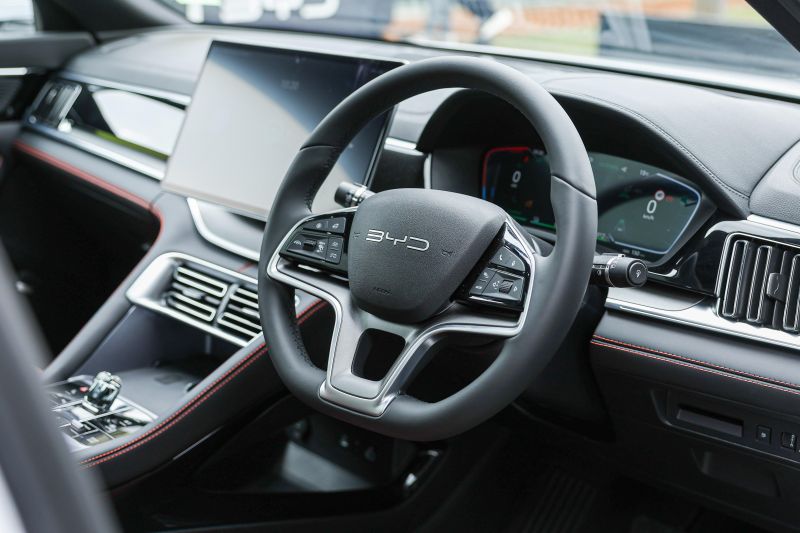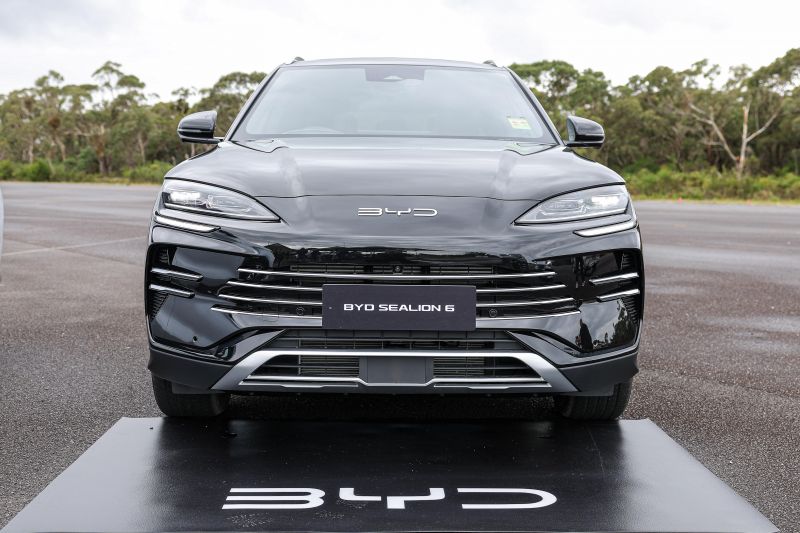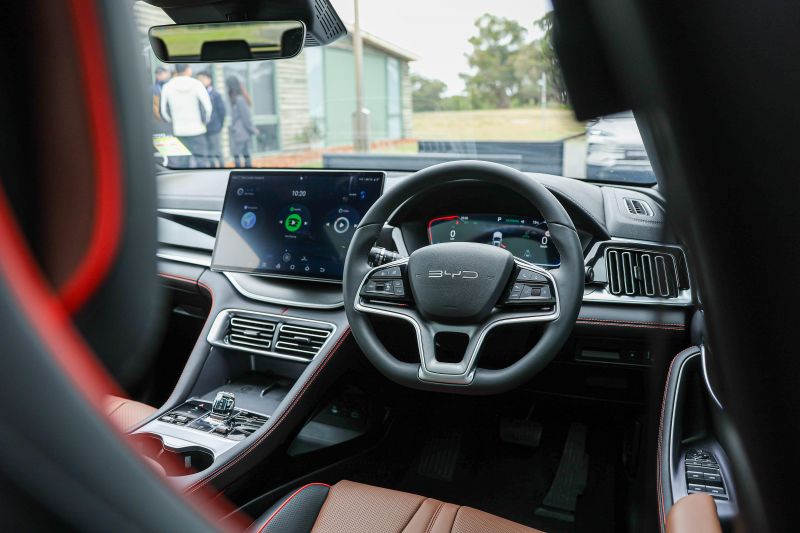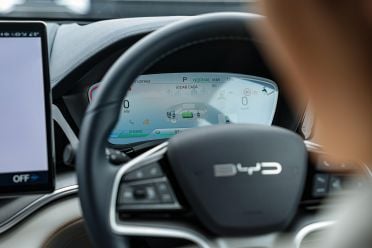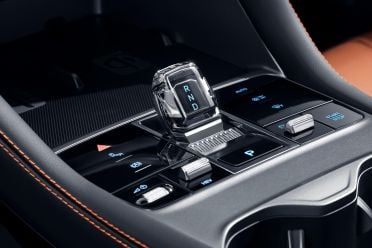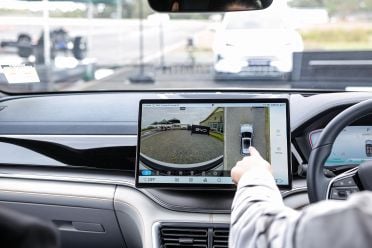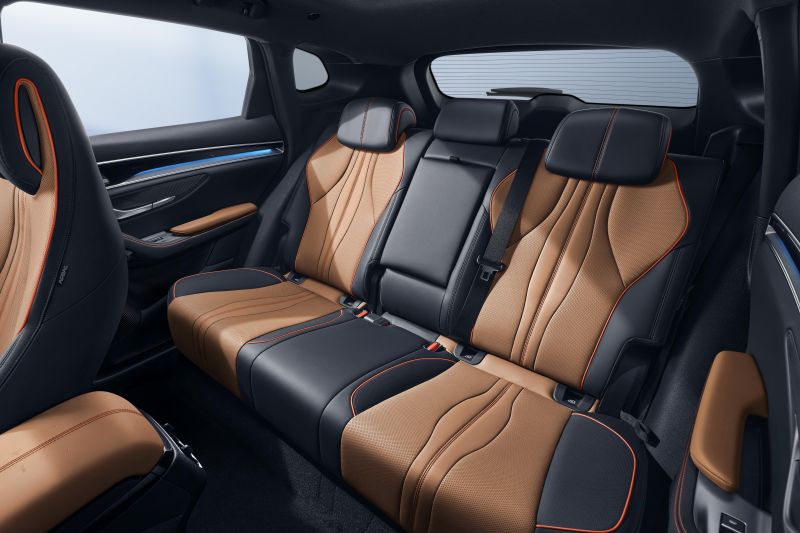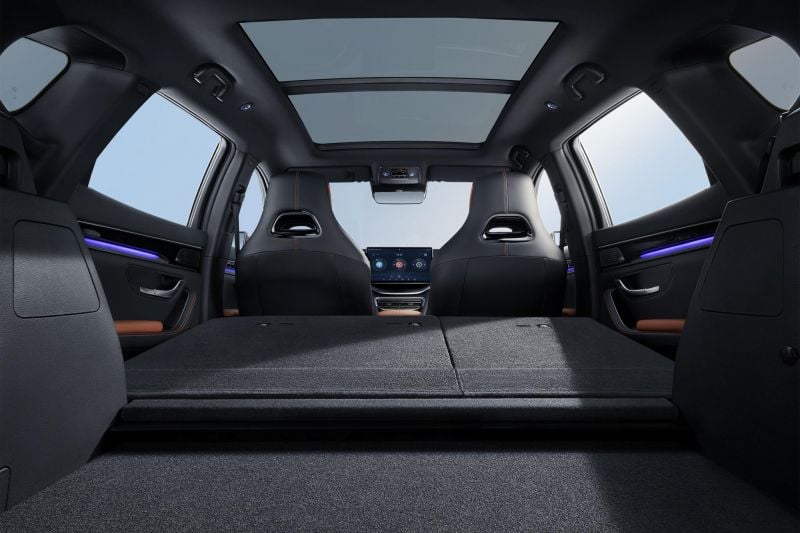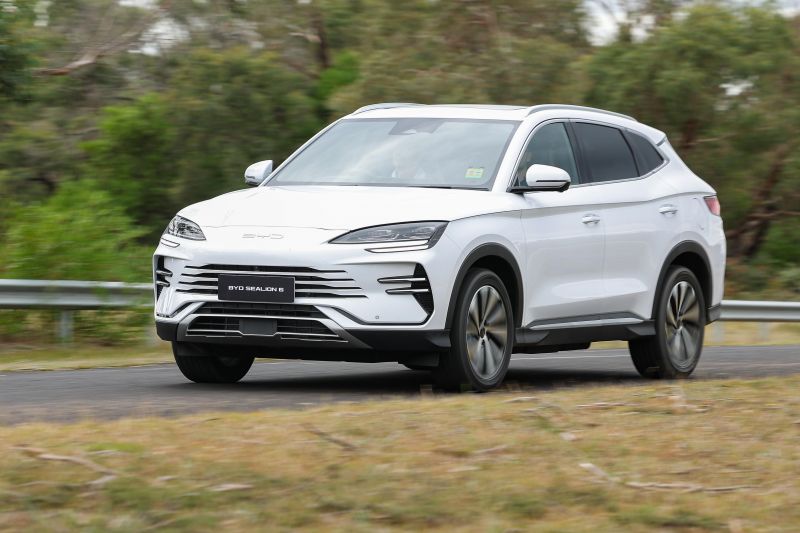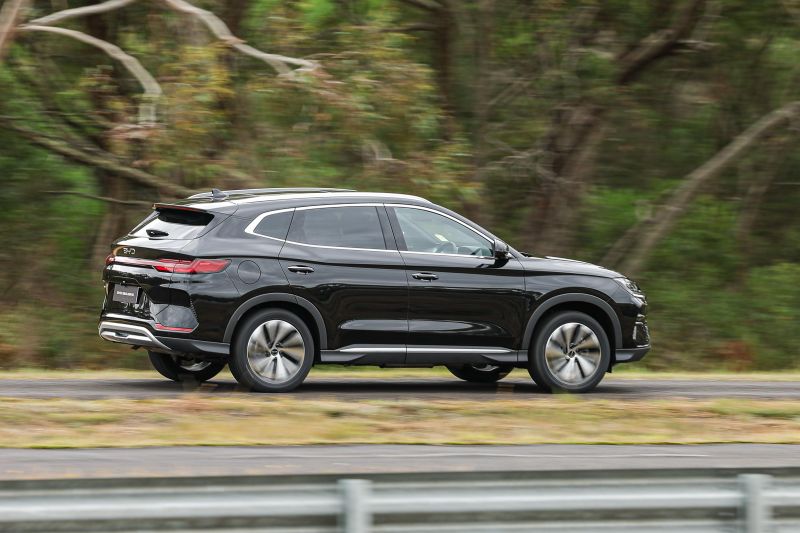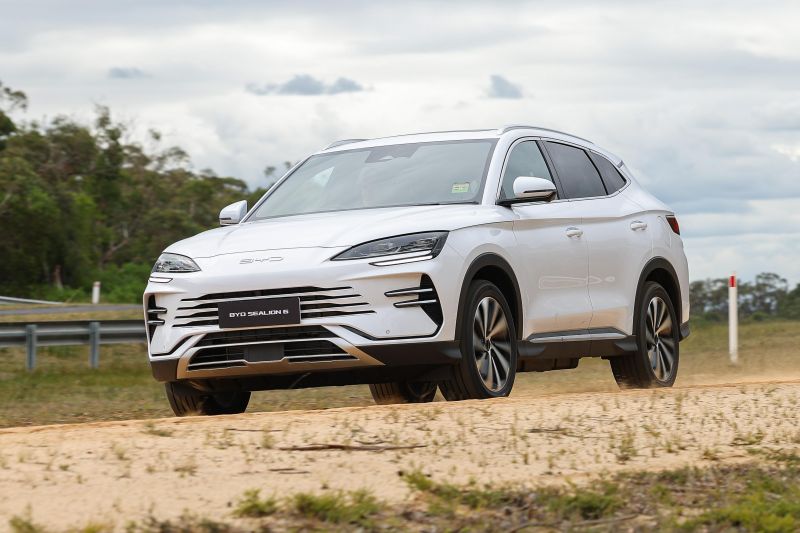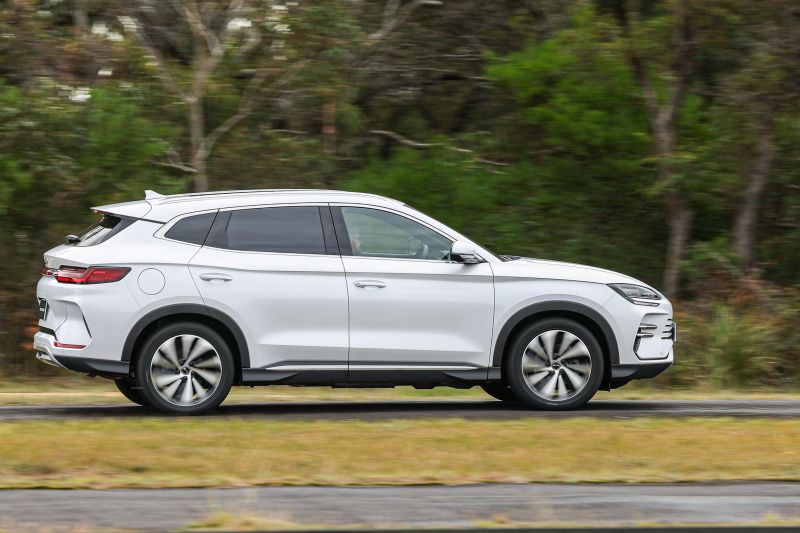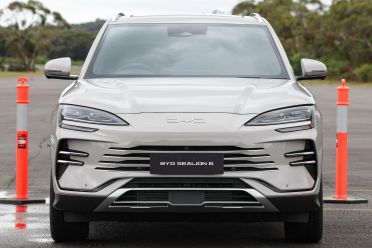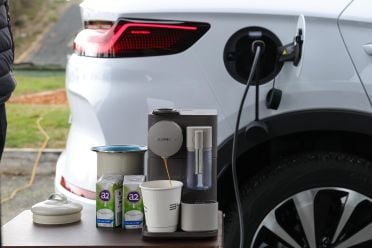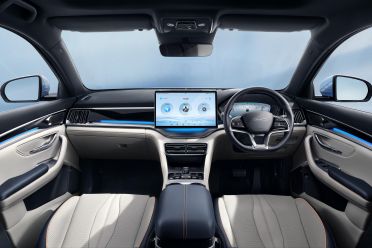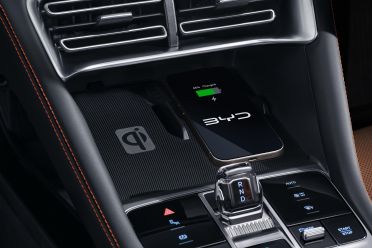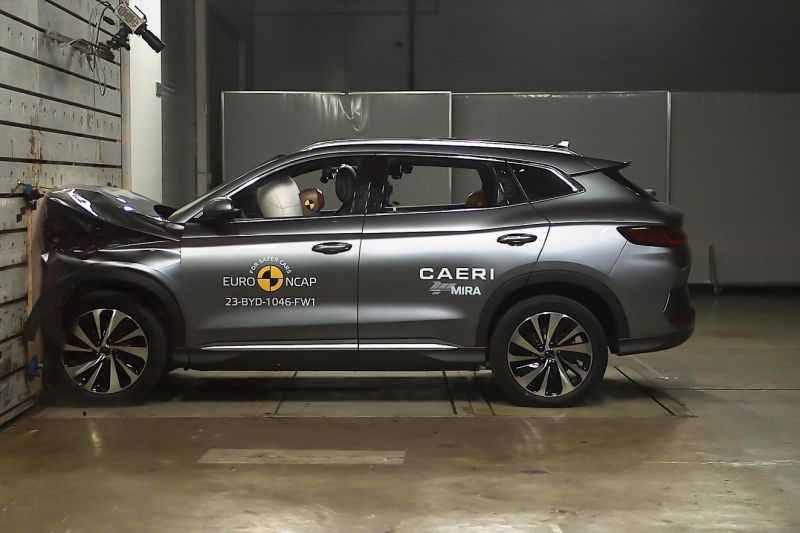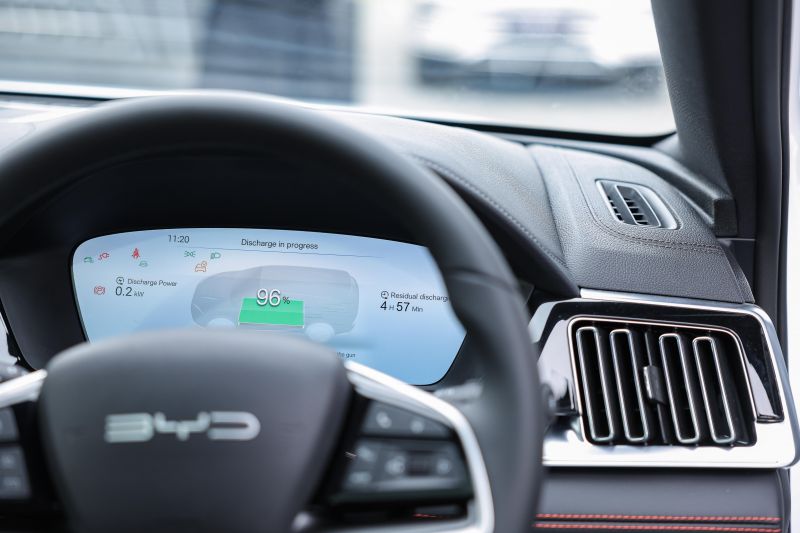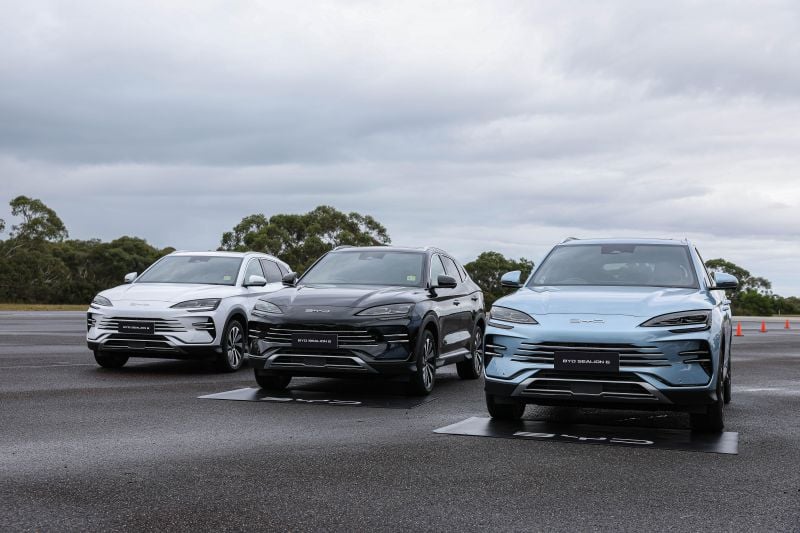BYD’s showrooms are slowly turning into Sea World.
While the brand’s Australian story started with the Atto 3, it has subsequently launched the Seal sedan, Dolphin hatchback and now this: the 2024 BYD Sealion 6.
Formerly known as the Seal U and marketed as the Song Plus in China, the Sealion 6 is the brand’s first plug-in hybrid in Australia, and is sized to take on the likes of the Mitsubishi Outlander Plug-in Hybrid EV and the MG HS +EV.
BYD officially calls its PHEV technology ‘Super-Hybrid’, and focuses on using the vehicle primarily as an electric-first means of transport with the convenience (or safety net) of a petrol engine and fuel tank for longer journeys.
Perhaps more importantly, the Sealion 6 is its first proper crack at Australia’s highest volume and arguably most competitive new vehicle segment – medium SUVs. It’s home to stalwarts like the Toyota RAV4, Mitsubishi Outlander, and Honda CR-V, all of which offer hybrid options, and BYD is coming for a slice of a big pie.
Pricing relative to plug-in hybrid SUV rivals is pretty sharp – $48,990 before on-road costs for the base car with over 90km of WLTP-certified EV range. The cheapest Mitsubishi Outlander PHEV is nearly $10,000 more.
We were given a brief drive of some pre-launch examples at the Lang Lang proving ground in Victoria, and early signs are promising.
How much does the BYD Sealion 6 cost?
The BYD Sealion 6 is priced from $48,990 before on-road costs for the base Dynamic.
The MG HS +EV starts from $43,690 drive-away; while the Mitsubishi Eclipse Cross Plug-in Hybrid EV and Outlander Plug-in Hybrid EV are priced from $47,790 and $57,290 plus on-road costs respectively.
Even the base Sealion 6 Dynamic is specified like mid- or high-spec versions of its competitor, and offers more EV driving range than its rivals according to official metrics.
| Model Variant | $RRP |
|---|---|
| 2024 BYD Sealion 6 Dynamic | $48,990 |
| 2024 BYD Sealion 6 Premium | $52,990 |
Prices exclude on-road costs
To see how the BYD Sealion 6 lines up against the competition, check out our comparison tool.
What is the BYD Sealion 6 like on the inside?
While the Sealion 6 sports its own design inside and out, there are clear links to its stablemates, namely the Seal.
It feels more conventional and familiar than some of the ‘out there’ design choices of the Atto 3, for example, but is still distinctively BYD – from the displays and interface, to the materials and switchgear.
There are a lot more straight lines in the Sealion 6 than the Seal, giving an impression of space rather than sportiness, but I think that really plays into the family focus.
The driver sits in comfortable front seats with standard electric adjustment as well as heating and ventilation, and is faced with a 12.3-inch digital instrument cluster. As is BYD convention, a rotating 15.6-inch central infotainment touchscreen (the first in the lineup to offer wireless Apple CarPlay and Android Auto) is also present.
It also offers built-in Spotify and Amazon Music apps, in addition to a karaoke app – could be dangerous for Uber drivers. Rounding out the features list are Bluetooth phone connectivity, embedded satellite navigation, over-the-air software updates, and AM/FM/DAB radio. It’s hooked up to a 10-speaker Infinity premium audio system as standard.
We didn’t get much time to fiddle with the displays, but it appears to work like the tech in other BYD models. This is the largest digital instrument panel BYD currently offers, and it’s recessed into the dashboard like a conventional cluster.
Perceived build quality is very good. It may be cheaper than a number of other mid-sized SUVs, but the Sealion 6 feels very upmarket given the price. Compare it to a similarly priced Mitsubishi Eclipse Cross Plug-in Hybrid EV for example, and there’s no contest.
The Chinese brand has liberally applied soft-touch materials to almost every surface above the wastline, and even on the base model there are lovely contrast stitching details throughout the cabin. You can see the influence of premium German brand in some of the design elements here.
As standard the Sealion 6 will get a brown on black interior finish with contrast piping and stitching. If you opt for the Premium, you also have the choice of a Blue-Grey interior that’s very BYD.
We had a brief stint in the rear seat while another journalist drove, and like the first row it’s very competitive for the class.
Two full-sized adults will have plenty of space back there, even with the panoramic glass sunroof. I’m a little over 6’1 and had plenty of head room, as well as above average leg- and kneeroom. You could squeeze three abreast, but the raised centre position probably wouldn’t be comfortable for a full-sized adult.
The thoughtful and eye-catching trim detailing extends to the rear as well, including the dual-tone colour scheme, contrast piping and stitching, and high ratio of soft-touch surfaces. Meanwhile, a number of rivals (including the Volkswagen Tiguan) revert to harder plastics on the rear doors to reduce costs.
Amenities include reclining backrests for the rear seats, a fold-down central armrest with cupholders, directional rear air vents, USB-A and USB-C charge ports, as well as ISOFIX and top tether points for child seats.
BYD quotes a boot capacity of 425 litres (minimum) with the rear seats in place, expanding to up to 1440L.
There’s no spare wheel of any kind in the Sealion 6. Instead, a tyre repair kit is standard equipment across the lineup.
What’s under the bonnet?
There are two plug-in hybrid drivetrains available with the BYD Sealion 6 in Australia.
| Sealion 6 Dynamic | Sealion 6 Premium | |
|---|---|---|
| Engine | 1.5L 4cyl PHEV Single e-motor, front | 1.5L 4cyl turbo PHEV Dual e-motors: Front + rear |
| Power | 72kW + 145kW Maximum: 160kW | 96kW + 150kW + 120kW Maximum: 238kW |
| Torque | 135Nm + 300Nm Maximum: 300Nm | 220Nm + 300Nm + 250Nm Maximum: 550Nm |
| Transmission | Single-speed, reduction gear | Single-speed, reduction gear |
| Driven wheels | Front | All-wheel drive |
| Weight | 1940kg (kerb) | 2100kg (kerb) |
| 0-100km/h | 8.5 seconds | 5.9 seconds |
| Fuel economy (claim) | 1.1L/100km | 1.4L/100km |
| CO2 emissions | 24g/km | 32g/km |
| EV battery | 18.3kWh BYD Blade (LFP) | 18.3kWh BYD Blade (LFP) |
| EV driving range | 92km (100-25 per cent) | 81km (100-25 per cent) |
| Energy consumption (claim) | 16.9kWh/100km | 17.9kWh/100km |
| Fuel tank size | 60 litres | 60 litres |
| Fuel requirement | 95 RON | 95 RON |
Both versions of the BYD Sealion 6 can be fast charged at up to 18kW via CCS plug, which will see the battery replenished from zero usable EV range to 80 per cent capacity in around 30 minutes.
It also offers vehicle to load (V2L) with an output of up to 10A, which with an adapter can power external electrical appliances like a coffee machine – or life-saving medical equipment as an Australian family recently found out.
To see how the BYD Sealion 6 shapes up against its rivals, check out our comparison tool.
How does the BYD Sealion 6 drive?
Our test drive of the new Sealion 6 was limited to a short stint around the Lang Lang proving ground, over the ride and handling track, high-speed bowl and also a short section of dirt road.
BYD’s ‘Super Hybrid’ system can run as an EV, series hybrid, or parallel hybrid, and aims to operate as an EV first and then leans on the on-board petrol engine to assist when low on battery or under heavy loads.
The test loop had a mix of surfaces and speeds, but not all of it was necessary indicative of real-world conditions. We also only drove the higher-spec Sealion 6 Premium with the more powerful turbocharged PHEV system and dual e-motor all-wheel drive.
With up to 550Nm at your disposal, the Sealion 6 AWD offers plenty of punch both as an EV and as a hybrid, with effortless performance and linear responses. It’s also quiet and refined, something that can’t be said for all vehicles at the mainstream end of the segment.
Keeping in mind this is a 4775mm long and 1890mm wide family crossover weighing around 2.0 tonnes, the Sealion 6 feels quite substantial on the road – but in a good way.
It became very apparent the Sealion 6 has been tuned for comfort rather than driver engagement. The controls are all light for urban duties, and the softer chassis tune means it nicely irons out the lumps and bumps of patchy blacktop like Lang Lang’s ride and handling circuit to cushion occupants from the outside world.
There’s a bit of body roll in corners, and the Sealion 6 doesn’t feel particularly inclined to drive through successive corners at pace – although in reality the focus of this car is to safely cart families around the urban jungle. By that metric, I think it almost nails its intended purpose.
If you’re wondering, the Sealion 6’s chassis runs a MacPherson strut front suspension design and a multi-link rear.
Cabin insulation from road and wind noise is likewise very good, with minimal intrusion over the rougher parts of the test track, on the brief dirt section, and at 100km/h on the high-speed test bowl.
It was on the high-speed bowl we forced the Sealion 6’s 1.5-litre turbo petrol engine to fire to life and join the fun, though it came online in near silence and could only be faintly heard in the background even under hard acceleration. Impressive.
BYD detailed the various powertrain modes – EV, HEV Series, and HEV Parallel – all tailored to scenarios the Sealion 6 might encounter.
EV Mode is the default, and basically sees the vehicle operated as an electric vehicle until usable zero emissions range runs out. The Sealion 6 offers 92km of range in Dynamic guise and 81km for the Premium. Further, the company told us the vehicle will retain around 25 per cent of battery capacity to run as a hybrid when usable EV range reaches 0km.
HEV Series Mode uses the petrol engine to charge the battery while the e-motor(s) drive the car. The aim is to add to the vehicle’s combined driving range (ICE + EV) and also keeps the drive battery juiced to slip back into EV mode when it can.
Finally, HEV Parallel Mode continues to prioritise EV driving, but will use the petrol motor to cut in for maximum performance. Example conditions quoted included overtaking and towing – speaking of, the Sealion 6 offers a maximum 1300kg towing capacity in Premium AWD guise (750kg Dynamic).
We did a couple of untimed acceleration runs in the Sealion 6 Premium, and while it didn’t necessarily feel quite as quick as the 5.9-second 0-100km/h claim suggests, it certainly feels brisk for the segment.
As we didn’t get a chance to test the entry-level Dynamic, we can’t tell you how the single-motor version performs at this stage. We’ll aim to get the vehicle through the CarExpert garage to get impressions.
The limited launch drive also meant we weren’t able to really try out the Sealion 6’s active safety and driver assistance systems, either.
Adaptive cruise control and lane centring were used on the inner lane of the high-speed bowl and appeared to work as you’d expect. The surround cameras also offered clear vision, but we’ll have a better idea after driving this in the real world – but early signs are all pretty positive!
What do you get?
Two model variants will be available in Australia – the entry-level Dynamic, and top-spec Premium.
Sealion 6 Dynamic highlights:
Exterior
- 19-inch alloy wheels
- 235/50 R19 Giti tyres
- Panoramic sunroof
- Matte roof rails
- One-touch tailgate
- Rain sensing wipers
- Electrically adjustable, heated mirrors
- Auto-dimming interior mirror
- Soundproof glass – front
- Privacy glass – rear
Interior
- Synthetic leather-wrapped steering wheel
- 12.3-inch LCD digital instrument cluster
- Sunglasses holder
- Synthetic leather-wrapped seats
- 8-way power driver seat
- 4-way power passenger seat
- Heated, ventilated front seats
- Manually adjustable rear seat backrests
- Front dual cup holders
- Rear centre armrest incl. 2 x cup holders
- Metal door sill protectors
- Front sunvisors incl. vanity mirror, lighting
Entertainment
- 15.6-inch rotating touchscreen
- AM/FM/DAB radio
- Wireless Apple CarPlay, Android Auto
- Bluetooth phone, audio streaming
- Music streaming apps
- Satellite navigation
- Voice assistant
- 10-speaker Infinity audio
- BYD app store
- 1 x USB-C, 1 x USB-A – front
- 1 x USB-C, 1 x USB-A – rear
- OTA updates
Light
- LED headlights
- LED daytime running lights
- LED tail lights
- Sequential rear indicators
- RGB dynamic ambient lighting
- incl. rhythm function
- LED front reading light
- LED rear side reading lights
Comfort and Convenience
- Keyless entry, start
- NFC card key
- 2 x wireless phone charges – 15W
- 12V accessory socket
- PM2.5 filtration system
- Dual-zone auto climate control
- Rear central air vents
- Tyre repair kit
Sealion 6 Premium adds:
Chassis
- Additional terrain modes
- Mud + Sand
- AWD
Safety and Security
- Head-up display
Interior
- Blue + Grey upholstery ($NCO)
Is the BYD Sealion 6 safe?
The Sealion 6 doesn’t arrive with an ANCAP safety rating, though BYD says a five-star result is “expected”.
The confident response could be because the electric BYD Seal U achieved a five-star Euro NCAP result in 2023, including a 90 per cent score for adult occupant protection, 86 per cent for child occupant protection, 83 per cent for vulnerable road users, and 77 per cent for safety assist.
Should there be minimal discrepancies in structural and crash test data, the Sealion 6 PHEV could very well achieve a similar result as we’ve seen with other nameplates supporting multiple powertrain types.
Standard safety features include:
- 7 airbags
- Dual front
- Dual side
- Dual curtain
- Front-centre
- Adaptive cruise control
- Autonomous emergency braking (AEB)
- Blind-spot monitoring
- Child Presence Detection
- Door Open Warning
- Front collision warning
- Front cross-traffic assist
- High beam assist
- Intelligent speed limit information, control
- Lane departure warning
- Lane keep assist
- Rear collision warning
- Rear cross-traffic alert
- Traffic sign recognition
How much does the BYD Sealion 6 cost to run?
EVDirect covers the BYD range with a six-year, 150,000km vehicle warranty and an eight-year, 160,000km battery warranty.
Neither BYD or EVDirect have detailed the Sealion 6’s maintenance schedule or costs as yet, though the brand’s electric products require scheduled servicing every 12 months or 20,000 kilometres – whichever comes first.
We’ll update when service pricing information becomes available.
CarExpert’s Take on the BYD Sealion 6
This is a big call – but the BYD Sealion 6 could be the best Chinese-branded car I’ve driven yet.
I will caveat that with the fact the launch drive was brief, and that things could still change once we get a chance to live with it on public roads, but I’d argue this is the most complete and refined product wearing Chinese branding.
The Sealion 6 could also start a push towards plug-in hybrids in Australia. Historically many brands have skipped PHEV tech or approached it as more of a token effort. From what BYD and local distributor EVDirect are telling us, they want to sell these by the bucketload.
With circa-90km of EV driving range alone and the potential for a total range of over 1000km between fills and charges, the Sealion 6 presents an interesting option for those wanting to step into electrified motoring who aren’t quite ready for a battery electric vehicle.
There’s also minimal compromise. It’s a family-friendly size, is a smooth and comfortable mover, and will operate as an EV first then a series hybrid after. You can drive this predominantly as an EV for the most part, only needing to tap into the ICE motor and range-extending fuel tank if you ever head far out of town.
Areas for improvement include a little more driver engagement, the slightly awkward rear look from some angles (subjective I know), and perhaps an even more affordable entry variant with cloth seats and fewer luxury items to push that base pricing closer to the $40,000-$45,000 mark.
Perhaps the other critical element is that we haven’t tested the Sealion 6 in the real-world on public roads in daily life conditions. That will be the true test of whether the Chinese brand’s new SUV is up to task for Aussie families.
Click the images for the full gallery
MORE: Buy a BYD Sealion 6
MORE: Everything BYD Sealion 6


